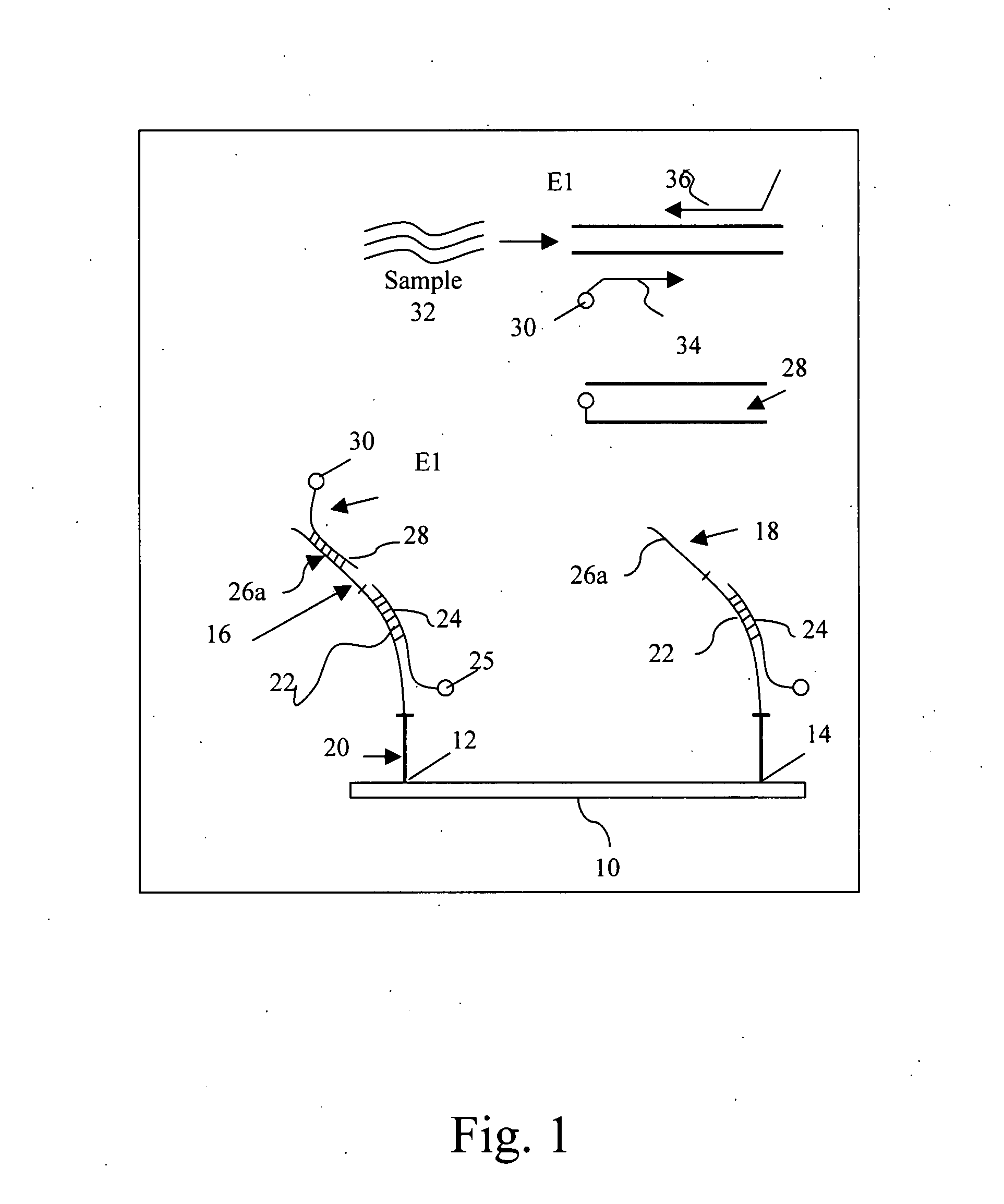Multiplexed assay and probes for identification of HPV types
a technology of hpv and probes, applied in the field of human papilloma virus detection, can solve the problems of inability to detect hpv, and inability to fully identify hpv types,
- Summary
- Abstract
- Description
- Claims
- Application Information
AI Technical Summary
Benefits of technology
Problems solved by technology
Method used
Image
Examples
Embodiment Construction
Overview
[0034] A DNA microarray in the form of a chip was developed. Degenerate primers capable of amplifying approximately 90 HPV types were designed to target the E1 region of the gene. The design of the array allows for the identification of more HPV types than prior art methods (Klaassen C et al., 2004; Snijders P. et al., 1990; Gravitt P. et al., 2000). Most techniques that are currently used focus on detecting and typing HPV types that are known to be involved in the development of malignancies. Therefore, these techniques may perhaps contain the most known high-risk HPV types and some low-risk types but exclude the HPV types that have not yet been classified and associated with and clinical disorders. With the wide-range of HPV types that can be identified with this technique, other HPV types can also be investigated on their association with the development of other type of cancer.
[0035] Given that the chip uses the E1 region of the HPV gene as a target, the disadvantage ...
PUM
| Property | Measurement | Unit |
|---|---|---|
| Tm | aaaaa | aaaaa |
| temperature | aaaaa | aaaaa |
| temperature | aaaaa | aaaaa |
Abstract
Description
Claims
Application Information
 Login to View More
Login to View More - R&D
- Intellectual Property
- Life Sciences
- Materials
- Tech Scout
- Unparalleled Data Quality
- Higher Quality Content
- 60% Fewer Hallucinations
Browse by: Latest US Patents, China's latest patents, Technical Efficacy Thesaurus, Application Domain, Technology Topic, Popular Technical Reports.
© 2025 PatSnap. All rights reserved.Legal|Privacy policy|Modern Slavery Act Transparency Statement|Sitemap|About US| Contact US: help@patsnap.com



